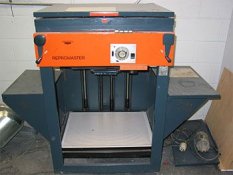The first newspaper I worked at used slides for all the colour work. You could make the separations right off the slide. For the most part we shot the colour stuff on medium format and the b&w on 35mm. Then I moved onto another paper and they shot colour negative for everything. For the colour work the prints had to be made the exact size they would run in the paper, so there was a team of colour darkroom printers working evenings to make the prints after the editor had selected the size. These exact size prints were be used to make the separations. They could gang all the prints together and then physically cut them apart and put on the page.
You could not use a negative directly to make a separation, and there were no negative scanners yet.
You could not use a negative directly to make a separation, and there were no negative scanners yet.



